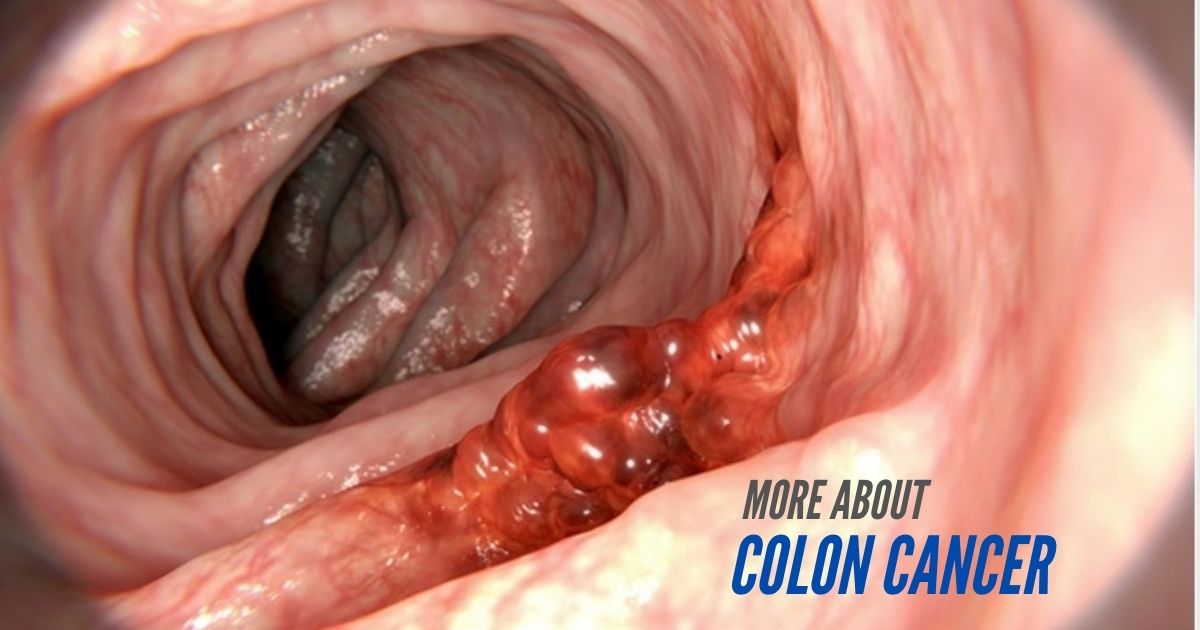More about Colon Cancer
Colon cancer or more specifically colorectal cancer often starts as a small nodule and they usually do not show any symptoms or signs. Though they are detectable by colonoscopy, the procedure itself is not done most of the time unless cancer manifests and the patient has long begun to show symptoms. Let us know more about colon cancer and how to detect it.
What are the symptoms of colon cancer?
- Subtle changes to bowel movements. One can experience constipation or diarrhea which does not go away even with medications.
- Bleeding from the rectum. Often times this is confused with piles. In the case of piles, since the bleeding happens from the outer anal region, the blood can be observed as streaks on the stools and it is red in color. In the case of colon cancer, since the bleeding happens from more inside, the blood is mixed with stool and the stool is oftentimes blackish-red in color.
- Loss of appetite and sudden weight loss
- A bloated feeling and general fatigue
- A crampy feeling in the anorectal region
- Pain can be present in the anorectal region through the day and it can increase during defecation.
- If the cancer cells have grown in the colon region it can change the shape of the stool. Often times the stool might come out in the form of a long pencil shape.
- Colonic obstruction or colonic perforation also can present in some people thought it is a complication.
- Anemia in case the bleeding has been more and because of that, the count of red blood cells has nosedived.
The confusion between Piles and Colon Cancer
Since piles and cancer have bleeding as a common factor, they are more often mistaken for one another. As a general rule, piles or hemorrhoids cause painless bleeding unless it is not complicated. Cancer in the bowel, on the other hand, causes continuous pain and it is aggravated during defecation.
As a general ground rule, piles manifest at an early age. So in cases of piles, instances of bleeding in the anal region will not be new when the patient is in their forties. Hence if a patient is bleeding for the first time in their forties, it might be a sign of colon cancer and needs to be ruled out immediately. When the bleeding is due to piles only, the blood usually comes as drops and also a streak on the fecus. In such a case, the blood is usually red in color. However if the bleeding is actually happening much inside which is generally associated with bowel cancer, the blood is mixed with the stool and does not appear as a streak on it. The color of the stool is blackish-red and can be a sign of colorectal cancer.
Colorectal Examination
It is always better than the doctor who examines your colorectal region and ascertains the actual condition. This is needed to rule out cancer and to remain on the safer side. So if you have bleeding from the anal region, an examination of the colorectal region is a must. As a first step, the experienced surgeon might do a digital examination of the colorectal region. In this simple method, the doctor would put his fingers inside the colorectal region to find out if there are any unusual growths in the colorectal region. This simple test can most times differentiate the cause of bleeding, whether piles or colon cancer. But still, any experienced surgeon would always solicit a sigmoidoscopy or colonoscopy report as the next logical step.
Colonoscopy – Detection of Colorectal Cancer
This is the gold standard diagnosis method to find any abnormalities in the colorectal and anal region. Colonoscopy has wide use and they are helpful in finding many abnormalities like Ulcerative colitis, stages of piles, detection of any unusual polyp growth, detection of tumor or cancer in the colorectal, and anal region, and other anomalies that can occur in the colorectal and anal region.
During the colonoscopy, if any unusual growth is observed, tissue samples are obtained then and there which is sent for the biopsy report. A biopsy report can confirm the presence of malignancy or cancer in the colorectal or anal region. The report can confirm the presence of a tumor, its size, extent or length of the tumor, etc. Colonic Obstruction can also be observed and reported in colonoscopy. As an intervention procedure, the colonoscopy procedure can also play an important part in placing a colonic stent to relieve the obstruction. Sometimes some patients cannot undergo complicated surgeries due to their age or cancer stage. If they have an obstruction, this procedure can play a vital role in giving some relief. The colonoscopy can also extend from the cancer region beyond the rectum and can give a good view of the other parts of the colon. If any other disease can be observed that can also be treated simultaneously. In case of any small, tiny cancer colon is detected, an immediate pre-operative colonoscopy can be used to localize and marking the tumor for easy identification for the surgeon during the surgery.
The best thing about colonoscopy is its ease of finding any anomalies. It is highly recommended that if you are above forty, and have a family history of cancer, you can get a colonoscopy done every 2 years so that anything in the polyp level can be detected even before it has manifested as malignancy. In this way, cancer can be nipped in the bud and one can lead a disease-free life.

